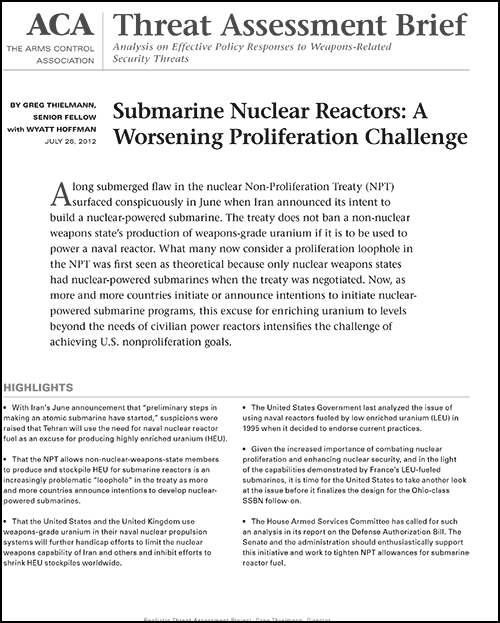July 26, 2012
By Greg Thielmann
 |
| Download PDF |
A long submerged flaw in the nuclear Non-Proliferation Treaty (NPT) surfaced conspicuously in June when Iran announced it intended to build a nuclear-powered submarine. The treaty does not ban a non-nuclear weapons state's production of weapons-grade uranium if it is to be used to power a naval reactor.
What many now consider a proliferation loophole in the NPT was first seen as theoretical because only nuclear weapons states had nuclear-powered submarines when the treaty was negotiated. Now, as more and more countries initiate or announce intentions to initiate nuclear-powered submarine programs, this excuse for enriching uranium to levels beyond the needs of civilian power reactors intensifies the challenge of achieving U.S. nonproliferation goals.
The United States should adjust its policy by: 1) choosing a reactor for the Ohio-class SSBN follow-on that does not require weapons-grade fuel and 2) pushing for multilateral action to close or at least narrow the NPT loophole that allows for non-nuclear weapons states to produce highly enriched uranium for naval reactors.
